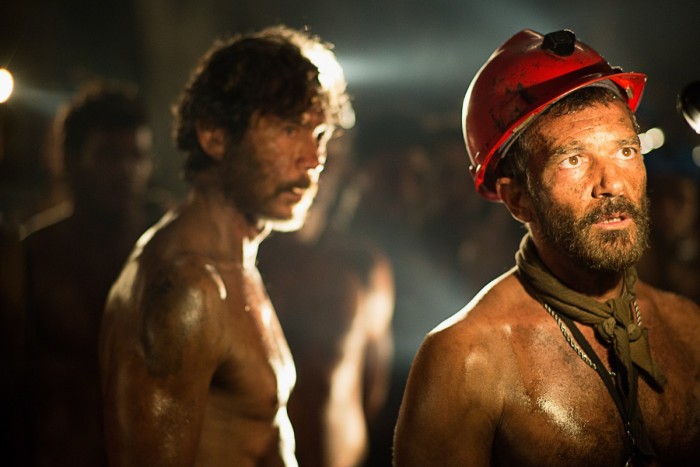
The 33 (2015) / Drama
MPAA Rated: PG-13 for a disaster sequence and some language
Running Time: 127 min.Cast: Antonio Banderas, Rodrigo Santoro, Lou Diamond Phillips, Juliette Binoche, Gabriel Byrne, Cote de Pablo, Mario Casas, Jacob Vargas, Juan Pablo Raba, Oscar Nunez, Tenoch Huerta, Marco Trevino, James Brolin, Adriana Barraza, Bob Gunton
Director: Patricia Riggen
Screenplay: Mikko Alanne, Craig Borten, Michael Thomas (based on the book, "Deep Down Dark", by Hector Tobar)
Review published November 18, 2015
 The 33 is
based on the highly publicized true story of thirty-three Chilean miners who, for over
two months in 2010, were trapped over 2,000 feet below the Atacama
Desert when there was a major collapse in their labyrinthine, century-old
cavern of
copper and gold, the San Jose Mine. Despite overwhelming odds, all of the miners
make it to the place called, "The Refuge", where food, medicine, and
an intercom to the surface are supposed to exist. However, their
company has done a poor job, cutting corners on safety measures,
leaving them with few rations and no functioning communications
equipment. With perpetual 100-degree temperatures, their lack of adequate
air, water, and sustenance begins to weigh heavier on the men than
the mountainous boulder that's trapping them down. There's no way back to the
sole entrance, and no way to communicate to the outside world if
they're even alive. All they can do is wait and hope that the people
who are outside decide to mount a rescue, and that they never give up
faith.
The 33 is
based on the highly publicized true story of thirty-three Chilean miners who, for over
two months in 2010, were trapped over 2,000 feet below the Atacama
Desert when there was a major collapse in their labyrinthine, century-old
cavern of
copper and gold, the San Jose Mine. Despite overwhelming odds, all of the miners
make it to the place called, "The Refuge", where food, medicine, and
an intercom to the surface are supposed to exist. However, their
company has done a poor job, cutting corners on safety measures,
leaving them with few rations and no functioning communications
equipment. With perpetual 100-degree temperatures, their lack of adequate
air, water, and sustenance begins to weigh heavier on the men than
the mountainous boulder that's trapping them down. There's no way back to the
sole entrance, and no way to communicate to the outside world if
they're even alive. All they can do is wait and hope that the people
who are outside decide to mount a rescue, and that they never give up
faith.